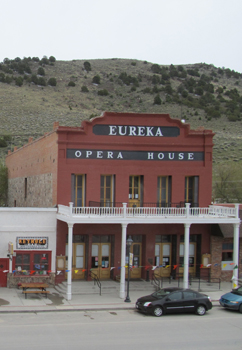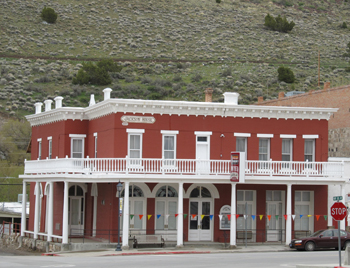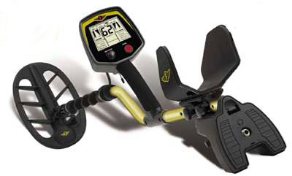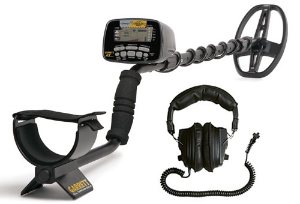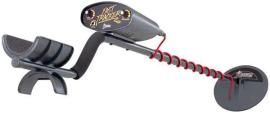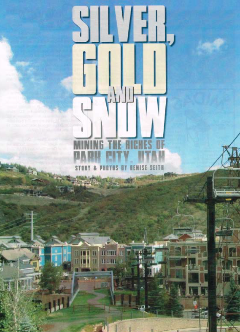Wednesday, October 28 2015
By now you’ve probably heard that climatologists are predicting that the winter of 2015-2016 will be unusual because of “El Niño.” An El Niño weather pattern is a periodic warming of the central and eastern equatorial Pacific "There's no longer a possibility that El Niño wimps out at this point. It's too big to fail," Bill Patzert, a climatologist for NASA's Jet Propulsion Laboratory, told the LA Times. "And the winter over North America is definitely not going to be normal." Most farmers and ranchers in the West are hopeful that these predictions are correct, especially those in California and other states that have been plagued by years of drought. Gold miners are generally hopeful because lots or rain and flooding moves gold around and re-deposits it. While terrible property damage can occur, depending on the severity of the storms, flooding can cause the renewal and reformation of pay streaks and refill crevices with gold. If flooding does move around some gold over the winter, there will be great opportunities in many Western gold-bearing areas come next spring and summer! The consensus of many experts is that El Niño will persist through winter 2015-2016, before weakening, as most of these weather patterns typically do, in spring 2016. Mike Halpert, the deputy director of the Climate Prediction Center, said this El Niño is the second strongest he's seen at this time of the year. "The atmospheric response to the equatorial sea-surface temperature anomalies, measured by their atmospheric ENSO index (AEI), is the strongest event since at least 1948," said Dr. Todd Crawford, chief meteorologist at WSI, the professional division of The Weather Company. According to NOAA (National Oceanic and Atmospheric Administration is a federal agency focused on the condition of the oceans and the atmosphere), the winter of 1997 was the second warmest and seventh wettest on record. Severe weather included flooding in the southeast and California, an ice storm in the northeast, and tornadoes in Florida. During that winter, Oklahoma had some its warmest temperatures and wettest weather. Of course California miners didn’t advocate for the destruction caused by the floods, but they were pretty happy with the resulting redistribution of gold in rivers and areas that previously had been “played out.” Mother Nature has a way of replenishing gold! Looking at past moderate-strong El Niño, here are the predictions for temperatures and precipitation from late fall 2015 through spring 2016 across the country: Wetter: Southern U.S. from California to the Carolinas then up parts of the East Coast Drier: Parts of the Ohio Valley, Great Lakes, Northwest and Northern Rockies Cooler: Desert Southwest, Southern Plains, northern Gulf Coast Warmer: Northern tier of states from the Pacific Northwest to the Northern Plains, Great Lakes, and Northeast The scientific evidence for El Niño seems strong right now, but it’s still a little bit early to say for sure about the strength of the upcoming storm patterns. Still, if you’re planning your prospecting trips and activities for the next six months, you might want to consider the potential golden bonanza an El Niño might bring! Thursday, September 24 2015
This detector comes with an 11-inch elliptical Bi-Axial searchcoil for maximum detection depth in mineralized soils. An accessory bundle for the T2 includes a smaller coil, backpack, hat, and more is also available (additional charge). This machine is light weight and the best balanced of any high-performance metal detector, so you can hold and swing it almost effortlessly. The armrest position is adjustable to fit your arm. The grip is durable high-friction foam elastomer, comfortable in any kind of weather. The controls are conveniently located and easy to learn how to use. Locking collars on the tubes eliminate rattling. The entire menu is always visible on the LCD display. The LCD display indicates the electrical signature (Target-ID) of the detected metal object. The display provides continuous information on battery condition and on ground mineralization, which affects detection depth. Help messages are automatically displayed on the lower right corner of the display when necessary. A great benefit of the Teknetics T2 is that it is easier to learn to use properly than other comparable metal detectors. A few of its best features inclue:
The T2 is powered by four AA alkaline batteries, which will typically last for more than 40 hours of use before needing replacement. The lead engineers on the design team were John Gardiner, firmware engineer, and David Johnson, whose expertise is behind many of the best-known high-performance metal detectors offered by major U.S. manufacturers for the last 26 years. 5 year manufacturer warranty from First Texas Products, LLC. Most metal detectors, like the Teknetics T2, use VLF Induction Balance technology. Here’s how it works: The searchcoil (also called search head or loop) contains two electrical induction coils which are like antennas. One coil transmits a rapidly alternating magnetic field, illuminating the region surrounding the searchcoil. If metal is present, its electrical conductivity distorts the magnetic field. If iron metal is present, its magnetism also distorts the magnetic field, but in a different way, allowing the metal detector to distinguish between ferrous and nonferrous metals. The other coil is a receiving antenna which detects changes in the magnetic field caused by the presence of metal. Electronic circuits amplify this weak signal, analyze it to determine the changes which occur as the searchcoil sweeps over the target, and then convey the information to the user in the form of a visual display or audio tones. Most modern metal detectors perform many of these tasks in software running on an internal microcomputer. The iron minerals which are present in most soils also distort the magnetic field, obscuring the weak signals of small or deep objects. This can cause the object to go undetected, or to be misidentified when it is detected. Much of the technology that goes into modern metal detectors is devoted to the task of eliminating the unwanted signals from iron minerals in the soil, while not losing the signals from metal objects. If you're considering a multi-use detector that's ideal for relic hunting, coin shooting, and gold prospecting, learn more here about Teknetics T2 Metal Detector and/or download the operating manual. Sunday, August 30 2015
When you consider the advantages of beach mining with a highbanker— easy access in all seasons, no • Good luck and have fun! Monday, July 20 2015
As you read this, water levels in many Western states will be at their lowest of Gold sniping, also called crevicing or cracking, is basically cleaning out cracks and crevices in and around bedrock— areas that were submerged for many, many years but are accessible during times of drought. These areas have the potential to trap and retain gold. After visually determining the best places to snipe (more on that later), all you need are a few simple tools for collecting and panning the high-grade material from those cracks. Basic, yet effective! When normally rushing rivers and streams are reduced to a trickle and boulders and bedrock are exposed, you won’t need a wet suit or snorkel, only some waders. The boulders can still be very slippery, though, so keep that in mind when crossing waterways. Most snipers do use a mask and snorkel and wetsuit. In addition, the basic tools for sniping include a plastic gold pan, long stainless steel tweezers, snuffer bottle, plastic vials, pry bars to loosen jammed-together rocks, a garden trowel or similar tool to dig behind boulders, and a bucket. A hand dredge or nugget sucker can really come in handy, too. The first step in prospecting, of course, is to stop by the appropriate BLM or Forest Service office to determine where you can recreationally hunt for gold. You don’t want to accidentally trespass on someone else’s claim. Once you’re there, visually study the river and think about all the areas that gold might be hiding. Loose flakes or nuggets of placer gold are much heavier than the surrounding sand and gravel, therefore, the dense metal gradually works its way downward and collects in seams in the bedrock. The inside bends of rivers tend to be good collection spots because the water slows there, allowing the heavier sands and metals to collect in and around anything that obstructs its path. Try investigating the exposed underwater root systems of any trees found along the bank, too. These act as natural gold traps. Large boulders offer opportunities as well. It's best to snipe on the downstream side of these monoliths since the back eddies occurring there sometimes pull gold and other heavy materials out of the passing current and force them to settle.
When you need a break from getting your feet wet (or the rest of you), panning along the bank or using a gold vacuum in the dry material along the shoreline can be lucrative. When the water level is low, plants, logs, and smaller rocks that used to be below the waterline are now visible. Gold might have collected around these obstructions when they were under water, but no one thinks to look here because they’re now in plain sight and almost too obvious. What others miss could be your bonanza! Bigger is not always better. With most mining operations, the more dirt you move, the more gold you get. As difficult as drought conditions are for farmers, ranchers, and many others, prospectors can use the low water levels to our advantage. Now is the time to work potential bedrock hot spots that could never be reached in normal years. Summer won’t last long, so get out there and get your share of the gold… sniping is just one more mining method that could have you yelling “Eureka!” Tuesday, June 23 2015
The Fisher F11 is a great all-purpose metal detector with a seven inch waterproof searchcoil. Priced at just $159, this model is extremely low priced and sure to fit any budget. If you're into digging up history, this detector is for you! The F11 offers three modes of operation: Jewelry, Coin and Artifact modes. Get more details and download the F11 owner's manual here. Two new weatherproof detectors, the F22 and F44 are resistant to weather, rain, storms, hail, snow, sleet, and high wind. These machines are impervious to splashing waves in beach use, or any kind of water. However, weatherproof does not mean that these machines can be submerged, but you definitely don't have to cancel your hunt or cut short your time in the field due to a little challenge thrown your way by Mother Nature! The Fisher F22 weatherproof all-purpose metal detector is priced at just $229 and is the result of many years of software engineering and features the latest advancements in lightweight design and target accuracy. Treasure hunting enthusiasts from around the world were involved in the development of this revolutionary new dectector. The F22 can be used with its default turn-on-and-go settings, or you can adjust the detector's settings to match your hunting conditions. Comes with a 9-Inch Concentric Elliptical Waterproof Searchcoil. Get more specifics and download the F22 owner's manual here.
Saturday, June 06 2015
Why buy only a metal detector when now you also get FREE accessories?! For a limited time, Garrett is offering the ACE The Garrett ACE 250 metal detector (#1139070) will be shipped with 3 FREE ACCESSORIES: Garrett TreasureSound headphones with volume control (#1612500), and a 6" x 9" searchcoil cover (#1605700) and the ACE Environmental Cover-Up (#1619900). All of this for just $212.45! You SAVE $49.85 MSRP compared to purchasing the detector and three accessories individually. The ACE 250 is Highly Recommended for Coin Hunting, Competition Events, Dry Beach/Fresh Water Hunting. Recommended for Jewelry Hunting, Relic Hunting, Ghost Town Hunting. Key Features:
Search Modes (Discrimination Patterns): 5 plus electronic pinpointing
Download the owner's manual, purchase, or learn more about the Garrett ACE 250 here. The Garrett ACE 350 metal detector (#1140260) will be shipped with 3 FREE ACCESSORIES: a Garrett Camo Digger's Pouch (#1612900), an 8.5" x 11" searchcoil cover (#1606600) and the ACE Environmental Cover-Up (#1619900). All of this for just $297.45! You SAVE $41.85 MSRP compared to purchasing the detector and three accessories individually. The versatile ACE 350 includes the best features of the world-famous ACE 250 but adds a powerful new 8.5" x 11" DD searchcoil, enhanced iron discrimination, and a higher frequency. This machine is highly recommended for Coin Hunting, Jewelry Hunting, Relic Hunting, Competition Events, Dry Beach/Fresh Water Hunting. If you want to search homesites, parks, campgrounds, playgrounds, and beaches, the ACE 350 is ideal! Key Features
Search Modes (Discrimination Patterns): 5 plus electronic pinpointing
Download the owner's manual, purchase, or learn more about the Garrett ACE 350 here. No matter which you choose— the 250 or the 350 Discovery Pack— both detectors includes Garrett’s patented discrimination feature. This technology, found only on Garrett detectors, features two indicator scales that allow the user to see the detector’s discrimination setting (Lower Scale) as well as the analysis of each detected target (Upper Scale). Offer for FREE accessory discovery packs ends December 31, 2015. Happy Hunting! Monday, May 25 2015
First Texas Products, manufacturer of the Fisher, Bounty Hunter, and Teknetics brand metal detectors, is
For the Demo/Instructional category, make a new video using any First Texas Products machines and show how to set up your machine, adjust the settings and provide any great hints or tricks you've learned since you began using your detector. For the hunting category, make a new video showing your hunt, finds, and the good times you have while out in the field with First Texas Products metal detectors. Enter the contest by making your videos and posting them on the corresponding YouTube channel (see below for channels). For example, if you are making a Fisher Video, post your video on the Fisher YouTube channel. If you are making a Bounty Hunter video, post your video on the Bounty Hunter YouTube channel. RULES:
Please share this with everyone you know that owns any First Texas Products metal detectors. Good Luck and Happy Hunting! Saturday, May 09 2015
In July 1986, Life magazine described Nevada’s U.S. Highway 50 between Ely and Fernley as the “Loneliest Lead and silver ore was first discovered in Eureka during the fall of 1864 when a party of five prospectors traveling 70 mile from the silver camp of Austin to explore the area. Unlike most new mining strikes, not much excitement was caused by this find— not because the assays of the rock weren’t favorable, because they were, but because the smelting methods available at the time were not suited to treat the oxidized gold-silver-lead ores (those which are found above the water level) they had found. The ore was rich in iron and arsenic and occurred in a form that was hard for the miners to process economically. When smelters were perfected and constructed several years later, mining boomed. The 16 smelters around town certainly didn’t improve air quality, but perhaps it was the 100 saloons that helped the nearly 10,000 residents forget about the pollution! At about that same time, several rich ore bodies on Ruby Hill were discovered, and as a result, the Eureka mining district became quite prosperous. Because of the town's central location in the state, it became a railhead for the whole area, which kept Eureka alive even after production decreased. Most of the district’s production was made between 1870 and 1890. Although there have been large amounts of gold produced in the last 50 years, the recorded production up to 1964 was approximately 313,000 tons of lead, 7,000 tons of zinc, 1,000 tons of copper, 1.65 million ounces of gold, and 39 million ounces of silver. These production totals are probably understated since records prior to 1901 were incomplete. Since 1964, nearly 1.5 million ounc To get a sense of Eureka’s past, and see dozens of historic buildings and sites in downtown, pick up a self-guided walking tour map at the Sentinel Museum, then spend a couple of hours or all day stepping back in time. A few highlights include: Eureka Opera House, built 1879, has been fully restored and now serves as a convention center and auditorium. Elegant features such as a chandelier, curtain, wood floors and horseshoe balcony (one of only three horseshoe-shaped balconies in Nevada) have been preserved. Historic graffiti has been preserved back stage from the early days, and the tradition has been continued with signatures of the people who have performed at the Eureka Opera House since it was reopened.
The 1877 Jackson House next door to the Opera House has been beautifully restored and has nine Victorian bedrooms upstairs, and a bar and restaurant downstairs. The brick Eureka Sentinel Newspaper Building dates from 1879 and now houses a museum. This structure was used as the newspaper office and residence until 1960, and was made into a county historical museum in 1982. The downstairs press room, shown above, features all original equipment on which the Sentinel was printed in the boom days of Eureka. Old copies of the Sentinel are tacked on the walls. In the mining history room upstairs you will see tools from the early days of mining, as well as historic stock certificates, ledgers and personal miners items. Lifestyle artifacts from the early days of Eureka are there, too, including items from schools, homes, and businesses. IF YOU GO: 10 North Monroe Street (right behind the Courthouse) Eureka, Nevada Phone: 775-237-5010 November – April: Tuesday through Saturday 10 a.m. to 6 p.m. May – October: 7 days per week 10 a.m. to 6 p.m.
31 South Main Street, Eureka, NV 89316 Phone: 775-237-6006 Monday, April 27 2015
What is the best metal detector? This is probably the Number One question that everyone asks when How much do you know about metal detectors? Be honest because the answer also affects your budget. If you're just getting started and plan to go out just a few weekends a year, you may not want to shell out a lot of cash up front so a general all-purpose detector in the $200 range will suit your needs. If you have used a friend's detector a few times and are fairly serious about wanting to find gold and other buried treasures of your own, then buy a detector in the $700 range that is user-friendly. You will get a very good quality machine with plenty of bells and whistles, yet it won't require an advanced degree to actually use it. And you won't have to spend hours reading the owners' manual to understand it either. Before investing in a model that costs thousands of dollars, first be sure you love detecting and will use it often enough to justify the big price tag no matter what brand you decide on. Garrett and Fisher are two of the oldest manufacturers in the business.
What do you primarily hope to find? If you want to find gold, you'll need a detector especially made for that purpose. Gold detectors are not necessarily more expensive, but they are built with a higher sensitivity to detecting gold nuggets, and have better ground balancing and discrimination abilities. PI machines aren't so good for coin shooting in urban areas where you are likely to encounter iron trash, however, they are ideal for beaches or detecting in other highly mineralized soils, especially if you are looking for objects that are deeply buried. VLF detectors are more sensitive to finding the smallest bits of gold, but do not as easily cancel out ground mineralization.
Metal Detectorist Code of Ethics
Saturday, April 11 2015
Thirteen years ago, Park City, Utah was the place Olympic athletes and thousands of spectators visited to “go for the gold” during the 2002 Winter Games. More than 145 years ago, however, an even larger group of people rushed to Park City seeking a different precious metal— silver. The first mining claim was filed in December 1868, and for over a century, the abundant veins found in the Wasatch Mountains surrounding the small town produced about $400 million in silver. When the mining industry slowed down in the 1920s and 30s, Park City's winter sports ramped up. Good money continues to be made today— with snow and tourism. Silver mining, though, is the town’s legacy, and still very much honored around town. Although not well known, Park City’s 300 silver mines were among America’s most productive and longest lasting. Even during the financial panic of 1893 when the bottom fell out of the silver market, Park City weathered the crash because the mines had been doing so well. Thirteen ounces was the average yield of silver per ton of ore from all Park City mines in their 100 years of production. But there was more than silver in them thar' hills. Heavy deposits of lead and zinc also were found around Park City, and in combination with copper and gold, the mining industry generated a total of a half billion dollars in precious metals from the 1870s through 1970s. Park City Museum The best place to learn about the mines, men, machinery, working conditions, town history, and prominent citizens of the day, is at the Mines and Men Park City turned out 23 mining millionaires during its boom years; their photos and biographies are among the museum’s displays. George Hearst, father of newspaper publisher William Randolph Hearst, was one of those fortunate individuals who became tremendously wealthy. Hearst bought the Ontario Mine in 1872 for $27,000 and turned it into a complex underground operation. Sinking six shafts and hundreds of drifts nearly 3,000 feet below the surface required a huge workforce, tons of dynamite, and piles of money, but it was well worth his investment. The Ontario went on to produce more than fifty million dollars, forming the basis for the Hearst fortune. The Ontario was the last silver mine in Park City to close in 1982. In February 1880, the Daly Mining Company was established. The Daly West Mine was one of several owned by John Daly. In 1881, he bought land next to the rich Ontario Mine and sunk a shaft 2,100 feet to reach the ore that extended underground. The Ontario was a silent partner in the enterprise. Within the next year or two, more mines were established. Some of the larger ones included the Crescent, Anchor, and the Mayflower. In 1892, Thomas Kerns, David Keith, Windsor Rice, Albion Emery, and John Judge organized Park City’s most productive mining company by consolidating mines and claims— the largest being the Silver King Mine. For almost 60 years, the company employed the latest technology, following veins to find new and greater ore bodies. The Silver King continued to grow over the years by purchasing neighboring mines and claims. Kearns and Keith were both born in eastern Canada but made their fortunes in Park City. They also became partners in other businesses, including the Salt Lake Tribune, which they purchased in 1901. They died within six months of each other in 1918. Although business at the time was mostly a man’s world, Susanna “Susie” Bransford was known as Utah’s Silver Queen. She married the local postmaster Albion Emery in 1884 , and the couple invested $8,000 in the Mayflower Mine. They really struck it rich when it merged with the Silver King. Susie outlived four husbands, including a Russian prince. By 1894, it was rumored that she was earning $1,000 a day from her interest in the Silver King. With her fortune and flamboyant lifestyle, she was a darling of the nation’s magazines and newspapers for much of her adult life. Most single women back in the day were not so lucky and made their living as “ladies of the night.” Prostitution was a source of income for Park City. Court records show that prostitutes and their “business managers” were regularly arrested, fined, and released. Sadly, suicide by arsenic was a common means to retire from the red light district. Life of a Miner Most early hard rock miners worked for wages, earning $2.75 to $3.50 per day, depending on the job. Many of the miners in Park City in the late 1800s and early 1900s lived in tents. Because times were rough and tough, they usually carried guns and often had cause to use them. Although some men saved enough money to start their own venture such as a butcher store or blacksmith shop, it was mostly the mine owners and investors who got rich. Although a 19th century hard rock miner’s pay wasn’t bad for the time, it meant long hours working in wet, dark, loud, and often dangerous conditions. Very few safety measures were in place. Miners were below ground their entire shift so they brought all their meals with them and ate in the “doghouse” which was a warm, dry room within the tunnels. Some of the early machinery was impressive, but it was basically human and animal muscle that was responsible for the mines’ success. Some beasts of burden spent years underground. Horses were affectionately called “hay burners” by the miners. Horses were treated well because, unlike miners, it was expensive to buy and train another horse. Oilskin slickers and pants were supposed to keep out moisture, but could do only so much. Even mules wore slickers to stay dry in the Ontario drain tunnel. Cats lived underground, too, keeping the mouse population under control. Electricity arrived in Park City in the 1880s but it was a luxury many could not afford. In 1889, it took almost half a day’s mine wages to pay the monthly power bill for a single light. Light bulbs were very expensive and in short supply. To discourage theft, the Silver King Mine stamped their bulbs “Stolen from the Silver King Mine.”Another interesting tidbit you’ll learn at the Park City Museum includes how to clean up with pig fat. A large mercantile at the time, Smith & Brim sold 50 and 100 pound buckets of rendered pig fat (lard). It could be used for cooking or combined with lye to make soap. Thrifty customers made their own soap, often using the same bar to do the laundry, wash the floors, and take a bath! The MEATS sign you’ll see hanging in the museum was the first electrified sign along Main Street. It used 80 light bulbs! Mining Technology
As in most underground mines, water was a constant obstacle. One solution was to use pumps. Another approach was to dig drain tunnels. The Ontario Mine installed a Cornish Pump in 1883. The machine was 30 feet high with a 70-ton flywheel and was imported from Philadelphia by freight wagon. The pump weighed 486 tons and had a capacity of almost four million gallons a day. Later, drain tunnels replaced pumps. The Marsac Mill processed ore from the very first Park City mine— the Flagstaff. The Marsac was a 20-stamp mill. Stamping is a process of crushing ore with huge weights. With 20 stamps operating, the mill could turn out 60-70 tons per day. Because of the long distance the ore had to be hauled to the mill and the technical problems associated with the crude stamp machinery, the Marsac was not necessarily a steady or satisfactory producer, and was only one of such stamping machines that deafened anyone in the vicinity. Before a prospector knew if he had struck it rich, an assayer had to confirm the value of silver in the claim. The Main Street assay office was where miners got the good or bad news. Taking representative core samples, assayers crushed and weighed the ore before pouring it into fireclay crucibles and melting it in the furnace. After cooling, the hardened metal was transferred into a cupel made of bone ash and placed in the furnace once more. The porous cupel absorbed everything but pure silver. The assayer weighed the silver on his delicate scale and calculated silver per ton based on the original ore weight.
Unionization Don’t miss the museum’s “dungeon” where you’ll find old walk-in jail cells along with exhibits on the Miners Union Hall. Mine owners, like all employers in the 19th century, were not held responsible for injuries or deaths. In 1902, an underground explosion at the Daly West Mine killed 34 men. Poison gas spread through tunnels to the Ontario Mine. Accidents like these didn’t happen every day, but they certainly were not rare. Lacking protection, workers organized unions and joined fraternal orders. Both organizations helped their members in difficult times and aided families whose breadwinners were killed or maimed. In 1904, a Miners Hospital was built for $5,000. Funds for the hospital was raised by local businessmen and the Western Federation of Miners Local #144. In the first year, 6,000 miners were treated for silicosis. Tramways When the mines first opened in the Park City area, most ore was hauled in horse-drawn wagons. Eventually more modern devices like the Silver King Tram replaced the wagon teams. Using buckets to haul ore to the mills was an economic success, lowering transportation costs to 22 cents per ton from $1.50 per ton when hauled with teams and wagons. Men could ride to work in the ore buckets from the lower terminal up to the mine. Processed ore was then brought down the mountain and loaded into railroad cars. Another engineering marvel, the Crescent Tramway, was not an overhead tram but a narrow-gauge railroad. In 1885 Shay locomotives (geared steam engines originally developed for the logging industry) pulled ore cars up steep 12 percent grades. Winding down the mountain for five miles from the Crescent Mine, the ore eventually reached the system’s depot and concentrator near Main Street where the ore was refined. Although used until 1900, deep snow covering the tracks rendered the engines useless in winter. Steep grades and heavy downhill loads made for frequent derailments. A winding paved walkway, open to the public, is all that remains of the Crescent Tram. Take a short uphill walk and try to imagine how the narrow gauge trains could possibly traversed the steep terrain. The Greatest Snow on Earth
During this same time, the local mining industry slowed down. The Stock Market crashed in 1929, plummeting the Silver King’s stock from $12.87 to $6.50. Mineral prices continued to drop, and in 1949 most of the mines shut down, putting 1,200 men out of work. Stores closed. People left. The population dropped to 1,150 souls from a peak of 10,000. Within a couple of years, Park City went into ghost town status. In an effort to diversify, United Park City Mines Company opened a ski resort in 1963. The old Spiro Mine drain tunnel was converted into an underground ski lift. This electric mine train, which you will see in the museum, carried skiers three miles into the mountain where a hoist then lifted them 1,800 feet to the surface. Since it took an hour to transport skiers, the Spiro tunnel wasn’t all that popular, but word spread about the great snow, and people started moving to the area. Over the next few decades, world-class ski resorts and high-speed chairlifts were built, annual art and film festivals were established, and in 2002 Park City hosted many of the XIX Winter Games. Park City today is a good example of a boom and bust mining town booming again—revitalized in grand style as a year-round mountain resort and international tourist destination. In 2008, Forbes Traveler magazine named Park City as one of “America’s 20 Prettiest Towns.” More than 60 of Park City's buildings are listed on the National Register of Historic Places, many of which are located along the town's Main Street alongside restaurants and plenty of shops and boutiques. Two years running— 2008 and 2009— Deer Valley Resort was named the number one ski resort in North America by SKI magazine. Whether you like to ski, shop, eat, hike, mountain bike, or just take in the scenery, a visit to Park City is a great place to treasure America’s mining heritage. Park City Museum • 528 Main St. • Park City, Utah 84060 • Phone: (435) 649.7457 Article and text by Denise Seith. First published in the March/April 2015 issue of Gold Prospector's Magazine. Click image on right to download .pdf of this article. |
|
Nugget of News Blog |






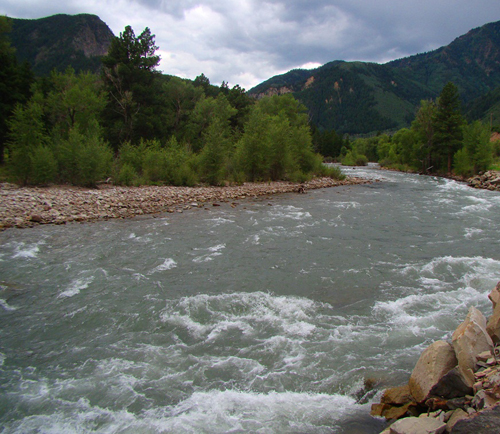
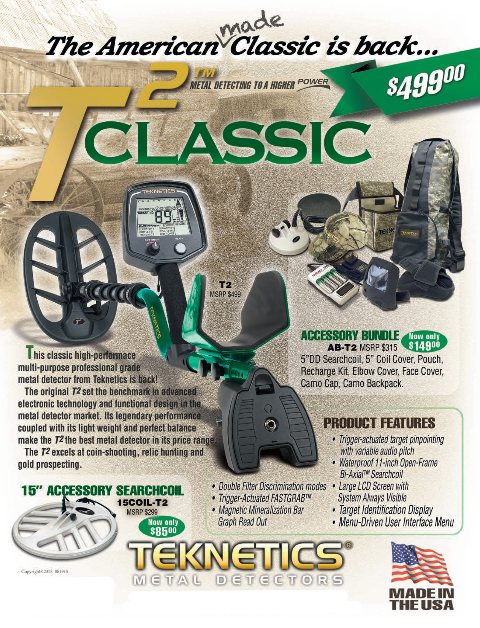
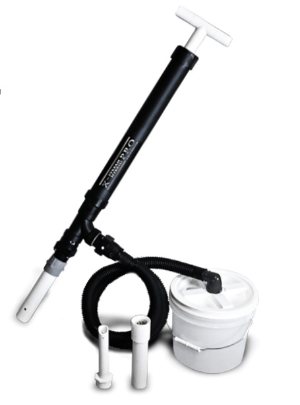 If you’re sniping underwater, float on the water with your mask and snorkel, going downstream with the current. Look for crevices below the waterline that are reachable. When you locate a likely spot, remove the loose sand that commonly fills crevices in the bedrock. “Fan” away the sand and lighter debris with your hand, then use a pry bar or other
If you’re sniping underwater, float on the water with your mask and snorkel, going downstream with the current. Look for crevices below the waterline that are reachable. When you locate a likely spot, remove the loose sand that commonly fills crevices in the bedrock. “Fan” away the sand and lighter debris with your hand, then use a pry bar or other 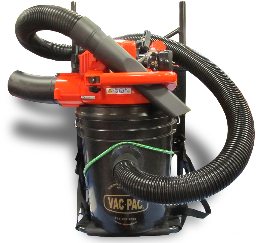 Sniping is about the little things— working smaller areas very thoroughly. Perhaps the most pleasurable thing about sniping is its simplicity. You can hike in and get away from the crowds, and enjoy some peace and quiet and lovely scenery. It is a cool way to spend a hot summer day, and if you have patience and really learn to read the stream, you will find more and more gold using this method. If you’re new to gold sniping, you also might want to search YouTube for videos showing snipers in action.
Sniping is about the little things— working smaller areas very thoroughly. Perhaps the most pleasurable thing about sniping is its simplicity. You can hike in and get away from the crowds, and enjoy some peace and quiet and lovely scenery. It is a cool way to spend a hot summer day, and if you have patience and really learn to read the stream, you will find more and more gold using this method. If you’re new to gold sniping, you also might want to search YouTube for videos showing snipers in action. 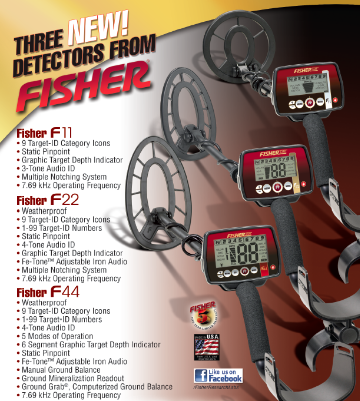
 The Fisher F44 weatherproof metal detector is backlit and environmentally sealed for use in the toughest environments. This unit comes with an 11 inch Concentric Elliptical Waterproof Searchcoil and is ideal for inclement weather hunting, beach hunting, coin shooting, jewelry hunting, and relic hunting. For only $349 you get many, many features that are usually only found on higher priced models— 9-Segment Visual Target-ID, 5 Modes of Operation, 20 Levels of Adjustable Sensitivity, 20 Levels of Adjustable Volume, 4-Tone Audio-ID and MORE!
The Fisher F44 weatherproof metal detector is backlit and environmentally sealed for use in the toughest environments. This unit comes with an 11 inch Concentric Elliptical Waterproof Searchcoil and is ideal for inclement weather hunting, beach hunting, coin shooting, jewelry hunting, and relic hunting. For only $349 you get many, many features that are usually only found on higher priced models— 9-Segment Visual Target-ID, 5 Modes of Operation, 20 Levels of Adjustable Sensitivity, 20 Levels of Adjustable Volume, 4-Tone Audio-ID and MORE! 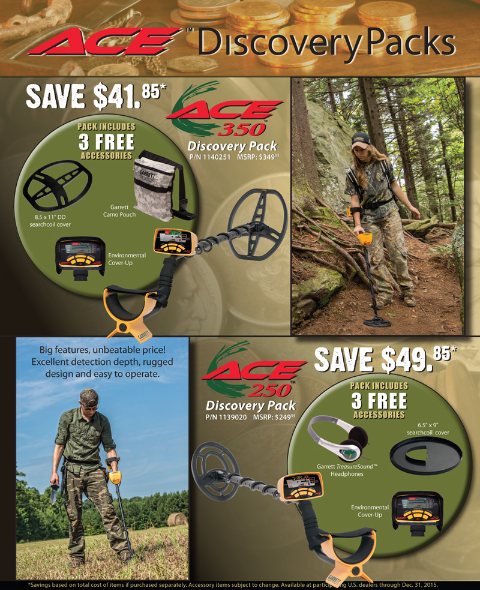
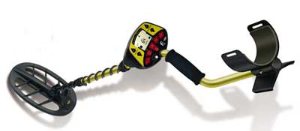
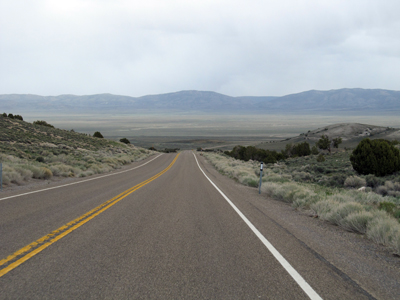 Road in America.” At the same time, AAA representatives warned travelers to avoid this empty 287-mile stretch unless they were “confident of their survival skills.” Much has changed in the last 30 years. The scenery is still wide open, there’s not a lot of traffic, but it’s far from lacking in amenities. This scenic corridor retraces the route of the Pony Express and Overland Stagecoach trails, connects you to plenty of recreational opportunities, and passes through five full-service communities. Eureka is one such stop along the route, and is one of the best-preserved 19th century mining towns in the state.
Road in America.” At the same time, AAA representatives warned travelers to avoid this empty 287-mile stretch unless they were “confident of their survival skills.” Much has changed in the last 30 years. The scenery is still wide open, there’s not a lot of traffic, but it’s far from lacking in amenities. This scenic corridor retraces the route of the Pony Express and Overland Stagecoach trails, connects you to plenty of recreational opportunities, and passes through five full-service communities. Eureka is one such stop along the route, and is one of the best-preserved 19th century mining towns in the state. 